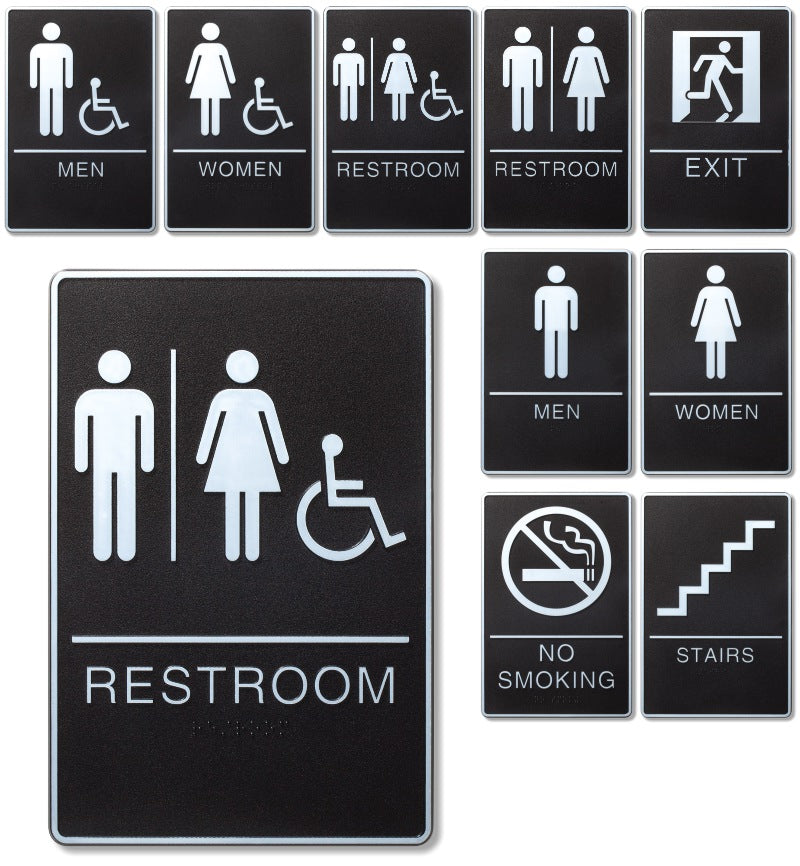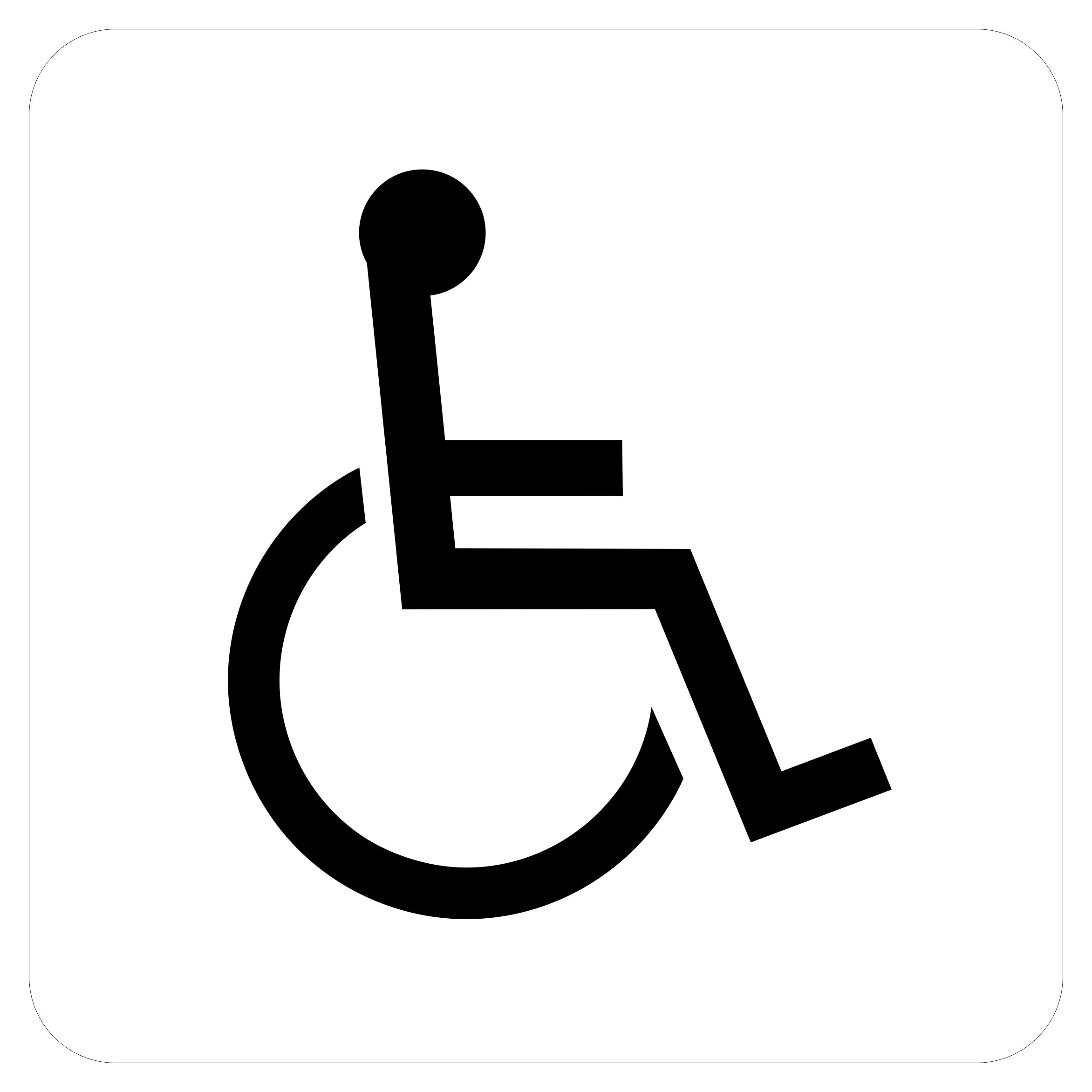ADA Signage: Making Sure Availability and Conformity in Public Spaces
ADA signs plays an indispensable role in guaranteeing accessibility and compliance within public spaces, substantially adding to a comprehensive environment for individuals with specials needs. As we discover the subtleties of ADA signage, from tactile features to create ins and outs, it's essential to take into consideration how these aspects integrate to support the civil liberties of all customers.
Value of ADA Signs
In modern culture, the importance of ADA signs prolongs beyond simple conformity with lawful mandates to personify a dedication to inclusivity and accessibility for all individuals. These indicators are necessary in developing settings where individuals with impairments can navigate public areas with the same convenience and independence as those without impairments. By providing standardized and clear details, ADA signs makes certain that everybody can access facilities, solutions, and information without obstacles.
The importance of ADA signs depends on its ability to improve the top quality of life for people with specials needs by advertising equivalent gain access to. It eliminates the barriers that may otherwise impede their ability to take part completely in neighborhood life. Moreover, these signs function as visible signs of an organization's dedication to variety and equal rights, reflecting wider societal values that promote the civil liberties and self-respect of all individuals.
In addition, ADA signage plays a crucial duty in public safety. By leading people to exits, bathrooms, and other vital facilities, it guarantees that all individuals, no matter of physical capability, can evacuate safely throughout emergency situations. In recap, ADA signage is not simply a governing demand but an effective tool for fostering a fair and inclusive society.
Crucial Element of Conformity

Positioning is vital; indications have to be installed in areas that are reachable and easily noticeable. Commonly, signage needs to be placed in between 48 and 60 inches from the ground to guarantee access for both standing and wheelchair individuals. Responsive components, such as Braille, are necessary for individuals with aesthetic impairments, supplying important information in a non-visual style.
High-contrast shades between the message and history are needed to boost readability for individuals with reduced vision. The ADA mandates details comparison proportions to ensure quality. Additionally, character dimension is a vital factor to consider, with minimal height needs determined by the viewing distance to make sure readability from numerous angles.
Layout Considerations for Availability
Creating obtainable signs needs a meticulous approach to guarantee it fulfills the requirements of all individuals, especially those with disabilities. This involves considering numerous layout components that enhance readability and usability. Trick aspects consist of the selection of typeface, color comparison, and responsive functions. Fonts must be sans-serif, with clear and basic letterforms, to facilitate very easy analysis. The size of the message is similarly vital, with ADA standards recommending a minimal elevation based on watching distance to make certain legibility.
Contrasting colors between text and background are important for visibility, especially for individuals with visual disabilities. A high contrast ratio assists distinguish the message from its background, boosting readability under numerous lighting conditions. Additionally, responsive components, such as Braille and increased personalities, are essential for individuals who are blind or have low vision. These elements ought to be found at a constant elevation and position to ensure simple gain access to and comprehension.
Moreover, the placement of signage plays a significant role in access. Indications need to be set up in areas that are unobstructed and easily obtainable. Guaranteeing that signage is placed at suitable elevations and angles enables all individuals, consisting of those making use of mobility devices, to connect with them efficiently.
Usual Errors to Avoid

Another prevalent mistake is the inaccurate positioning of signs. ADA standards specify accurate elevation and area demands to make certain that signs are conveniently noticeable and obtainable by all people, including those utilizing wheelchairs. Neglecting these guidelines not only hampers availability but likewise takes the chance of non-compliance with lawful requirements.
In addition, insufficient comparison between message and history is a frequent oversight. Sufficient comparison is necessary for readability, specifically for individuals with reduced vision. Developers in some cases choose colors that are aesthetically enticing yet do not have the necessary contrast, making the message hard to discern.
Last but not least, some developers stop working to incorporate tactile aspects, such as Braille, which official site are critical for people that are blind. Omitting these features not only causes non-compliance with ADA regulations yet additionally restricts gain access to for a sector of the population that relies upon tactile details.
Future Trends in Signs
Developments in technology and increasing recognition of inclusivity are forming the future patterns in signs design. As society ends up being a lot more aware of varied needs, the integration of wise modern technologies right into signs is acquiring traction. Digital signage, for example, is advancing to include real-time updates and interactive attributes, which can be More Bonuses important in giving dynamic info in public spaces. These indicators typically incorporate touch displays or gesture-based controls, enabling individuals to navigate material customized to their specific needs.
Another emerging fad is the utilization of enhanced reality (AR) to enhance user experience. AR-enabled signs can overlay digital info onto the physical environment, giving aesthetically impaired people with auditory or haptic responses. ADA Signs. This innovation not only enhances availability yet additionally produces an engaging experience for all individuals
Sustainability is additionally a considerable aspect influencing signs trends. Green materials and energy-efficient lighting solutions are being focused on to align with worldwide environmental goals. Improvements in materials science are leading to the development of more long lasting and weather-resistant indicators.
Verdict
ADA signs plays an essential duty in assuring ease of access and conformity within public areas by including tactile components, high-contrast colors, and calculated placement. The adherence to ADA standards not only assists in secure navigation for people with handicaps but also represents an organization's devotion to see here now variety and inclusivity. By staying clear of typical errors and embracing future fads, public rooms can proceed to progress these worths, making certain that the rights and self-respect of all people are appreciated and promoted.
ADA signage plays an indispensable function in ensuring availability and compliance within public spaces, substantially adding to an inclusive atmosphere for people with impairments. As we check out the subtleties of ADA signage, from responsive attributes to design details, it's vital to take into consideration how these components coalesce to maintain the civil liberties of all individuals.In modern society, the value of ADA signs prolongs beyond plain compliance with legal requireds to embody a commitment to inclusivity and accessibility for all people. By supplying clear and standard info, ADA signs makes sure that every person can access facilities, services, and information without barriers.
ADA signage plays a crucial duty in guaranteeing availability and compliance within public spaces by integrating responsive aspects, high-contrast shades, and critical positioning. (ADA Signs)